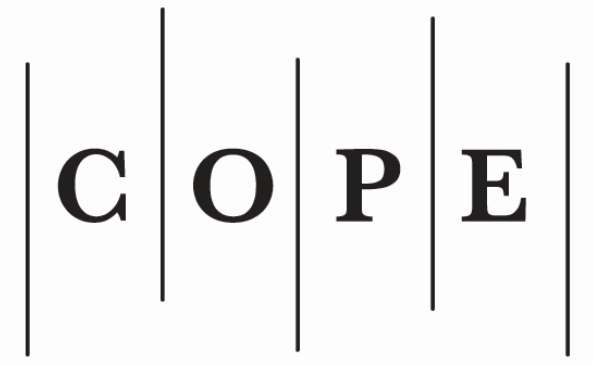Modelling of Systemic Risk of Banking Sector
##plugins.themes.bootstrap3.article.main##
Abstract
Purpose – to evaluate the general networking and simulation approaches of modelling of systemic risk and the financial contagion and their ability to assess the banking sector resilience in the case of external economic shocks and collapse of idiosyncratic financial institutions.
Design/methodology/approach – a general overview of research papers presenting concepts and methodologies of assessment of systemic risk of the banking sector.
Findings – limitations of the networking approach and possible ways to improve modelling of systemic risk. The network approach cannot explain the causes of initial default of bank. On the other hand, assumptions made on LGD and interbank exposures are very strong. These features are important limitations of network and simulation approaches.
Research limitations/implications – the application of reviewed methods in the case of Lithuanian banking sector falls, however, due to the lack of exhaustive data. On the other hand, until now, applied methods for systemic risk due to the lack of data have been limited. Also, because of this reason, there are difficulties to create adequate dynamic assessment for systemic risk models. Therefore, in assessing systemic risk of the banking sector, the same problem remains: is it possible to parameterize the financial crisis, its spread and speed and other characteristics according to quantitative methods. Knowing the liquidity, credit risk and other standards set in Basel Accords, it is also not enough to properly manage the systemic risk of the whole banking sector because for the proper activity of the banking sector not only characteristics related to capital requirements have influence on it, but also external (mostly the macroeconomic, political) factors.
Practical implications – determination of the explicit connection based on quantitative methods determining the systemic risk of the banking sector would be exact and objective assessment and useful not only for the banking executives providing business trends, identifying potential sources of risk in the near future, but also for the rest part of society, both ordinary citizens and entrepreneurs with current accounts and deposits in banks.
Originality/value – in essence, modelling of the systemic risk and analysis of instability causes of the banking sector applying reliable quantitative methods in Lithuania are not sufficiently developed. Researchers in other countries have established that a high threat of systemic risk is concentrated in the interbank market; many researches have been done to assess this risk, however, problems related to assessment of systemic risk and application of models always occur. The most common problem is the lack of information and assumptions, and constantly changing economic environment: emerging (or which may arise) new types of transactions, the new banking regulatory conditions and other financial innovations. First, whether the country’s banking business is so dependent on each other to create the threat of the systemic risk between banks’ assets and liabilities. Second, the banking sectors of the Baltic states are essentially controlled by large foreign banking groups, so there is no doubt that the international financial groups’ liquidity problems could spill over to other banks in the Baltic states. On the other hand, a question remains essentially and completely unexplored: how and why such problems could spill over in the Baltic Sea region countries? Also, little attention has been paid to the reliability of interbank payment systems and to the analysis of this object as a potential source of systemic risk.
Research type: literature review, general review.
Design/methodology/approach – a general overview of research papers presenting concepts and methodologies of assessment of systemic risk of the banking sector.
Findings – limitations of the networking approach and possible ways to improve modelling of systemic risk. The network approach cannot explain the causes of initial default of bank. On the other hand, assumptions made on LGD and interbank exposures are very strong. These features are important limitations of network and simulation approaches.
Research limitations/implications – the application of reviewed methods in the case of Lithuanian banking sector falls, however, due to the lack of exhaustive data. On the other hand, until now, applied methods for systemic risk due to the lack of data have been limited. Also, because of this reason, there are difficulties to create adequate dynamic assessment for systemic risk models. Therefore, in assessing systemic risk of the banking sector, the same problem remains: is it possible to parameterize the financial crisis, its spread and speed and other characteristics according to quantitative methods. Knowing the liquidity, credit risk and other standards set in Basel Accords, it is also not enough to properly manage the systemic risk of the whole banking sector because for the proper activity of the banking sector not only characteristics related to capital requirements have influence on it, but also external (mostly the macroeconomic, political) factors.
Practical implications – determination of the explicit connection based on quantitative methods determining the systemic risk of the banking sector would be exact and objective assessment and useful not only for the banking executives providing business trends, identifying potential sources of risk in the near future, but also for the rest part of society, both ordinary citizens and entrepreneurs with current accounts and deposits in banks.
Originality/value – in essence, modelling of the systemic risk and analysis of instability causes of the banking sector applying reliable quantitative methods in Lithuania are not sufficiently developed. Researchers in other countries have established that a high threat of systemic risk is concentrated in the interbank market; many researches have been done to assess this risk, however, problems related to assessment of systemic risk and application of models always occur. The most common problem is the lack of information and assumptions, and constantly changing economic environment: emerging (or which may arise) new types of transactions, the new banking regulatory conditions and other financial innovations. First, whether the country’s banking business is so dependent on each other to create the threat of the systemic risk between banks’ assets and liabilities. Second, the banking sectors of the Baltic states are essentially controlled by large foreign banking groups, so there is no doubt that the international financial groups’ liquidity problems could spill over to other banks in the Baltic states. On the other hand, a question remains essentially and completely unexplored: how and why such problems could spill over in the Baltic Sea region countries? Also, little attention has been paid to the reliability of interbank payment systems and to the analysis of this object as a potential source of systemic risk.
Research type: literature review, general review.
##plugins.themes.bootstrap3.article.details##
Section
Articles
- The Author grants to the Publisher the exclusive right and licence to publish this Article without remuneration until the expiry of the economic rights: to reproduce the article in print and digital form, including its publication; to disseminate the original version of the Article or its copies in Lithuania and foreign countries; to translate the Article; to publish the article, including making it publicly available via computer networks; to reproduce and publish the Article in Lithuanian and foreign databases; to licence usage of the Article in ways described in this paragraph.
- The Author warrants that the economic rights of the Author have not been assigned or granted to third parties, that the Article has not been published so far and is not under consideration of being published elsewhere.
- The Author warrants that the Article does not violate intellectual property rights of others.
- After the Article is published in Social Technologies the Author shall have a right to make it public on personal website or on a website of an institution of affiliation, to reproduce it for non-commercial teaching or scholarly research purposes, clearly indicating that the primary source of its publication is Social Technologies.
- This consent shall be considered invalid if the Editorial Board of the Social Technologies decides not to publish the Article.
Authors contributing to Social Technologies agree to publish their articles under a Creative Commons Attribution 3.0 Unported (CC BY 3.0) Licence, allowing third parties to share their work (copy, distribute, transmit) and to adapt it, under the condition that the authors are given credit, and that in the event of reuse or distribution, the terms of this licence are made clear.







